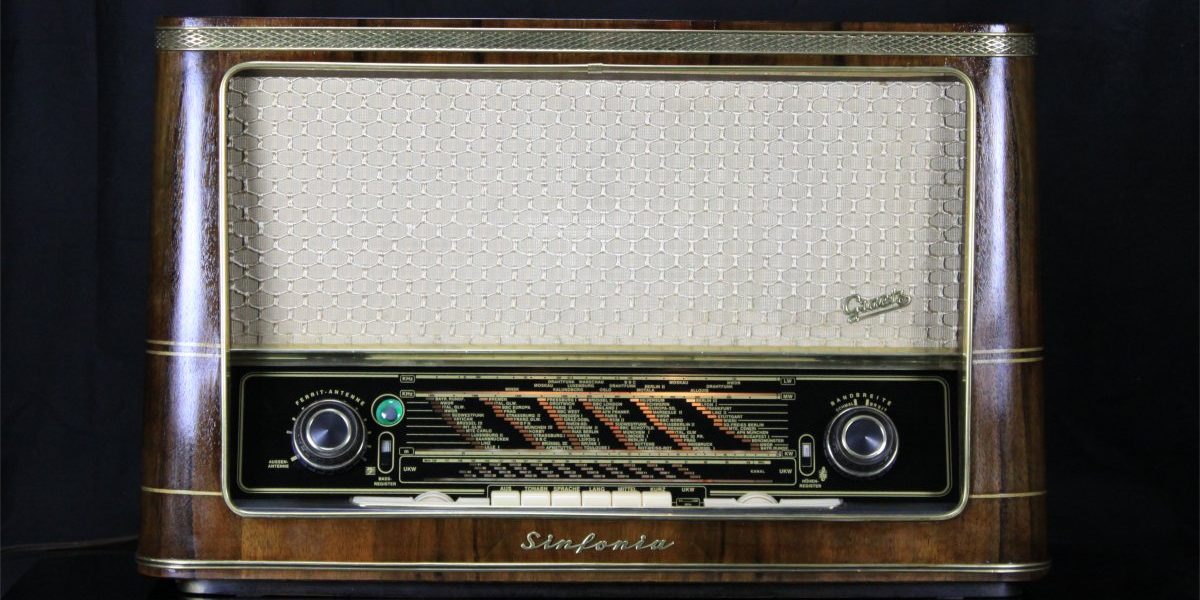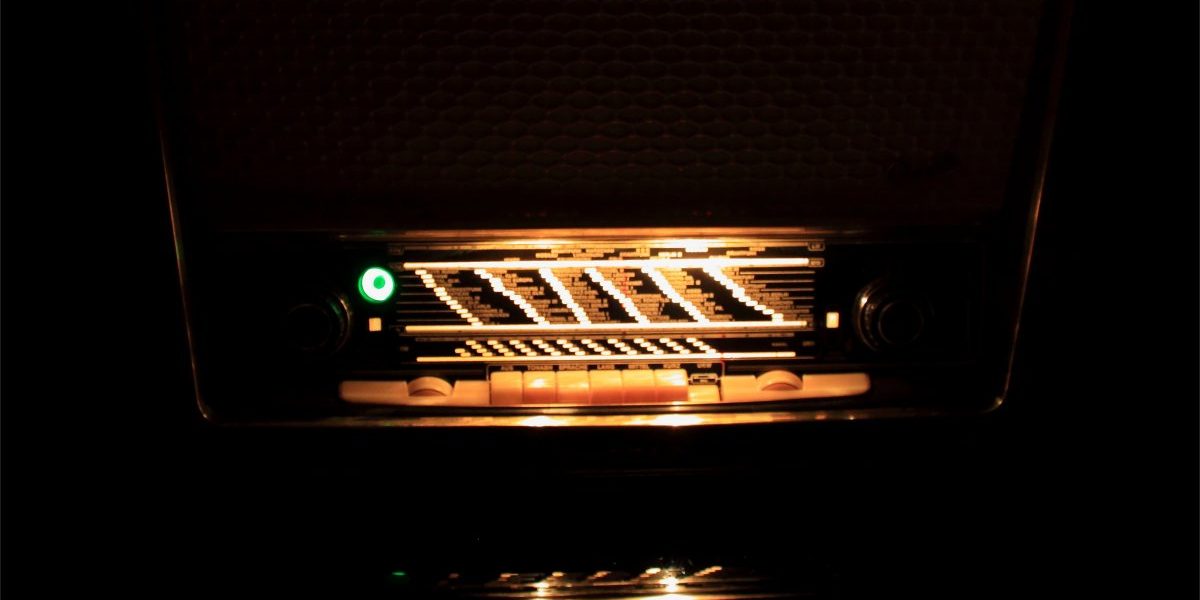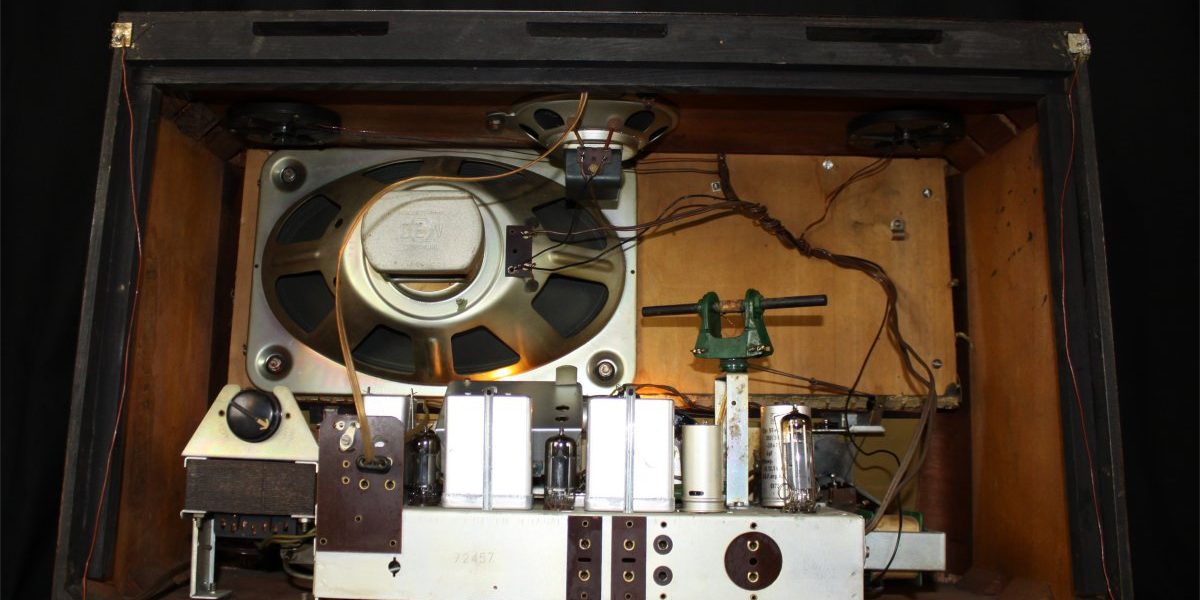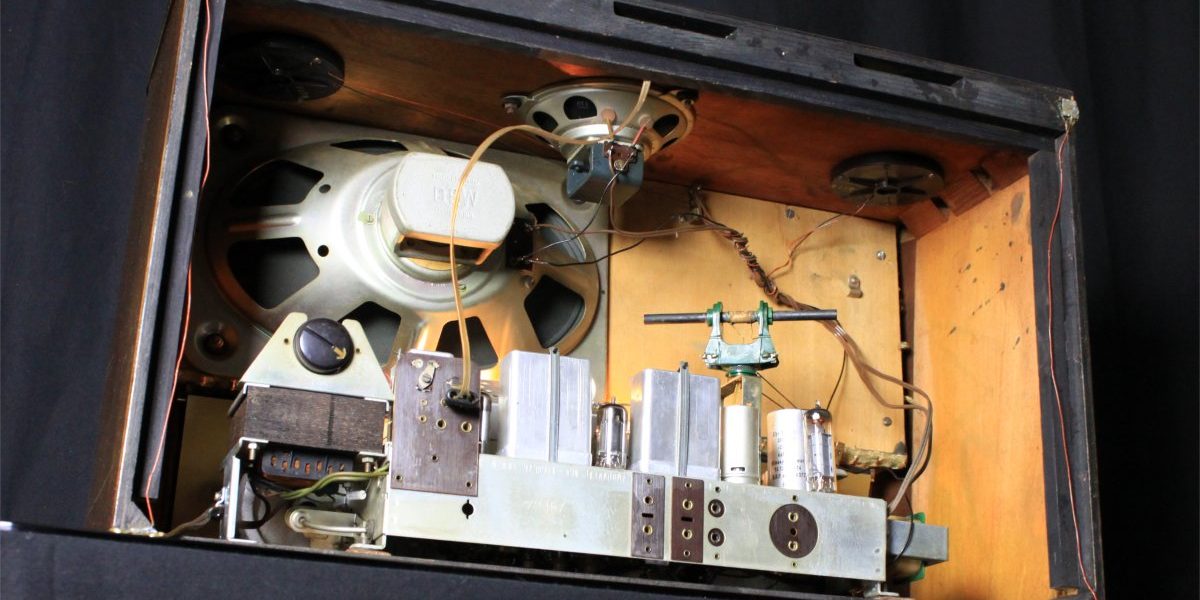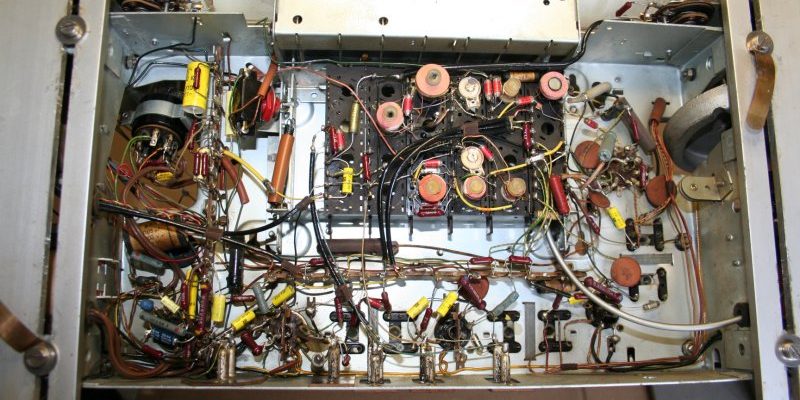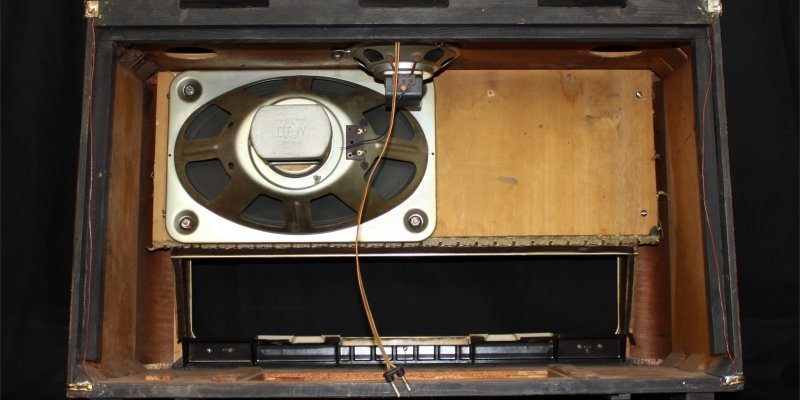 german radios - en
german radios - en
Graetz Sinfonia 4R/221 (88 – 108 MHz) – en
- 22nd January 20176th April 2023
- by giovanni
GRAETZ Sinfonia 4R/221 (88 – 108 MHz)
GRAETZ SINFONIA 4R/221
From the 2nd World War till the Sixties, Graetz was considered one of the most prestigious radio manufacturers, although it never achieved high sales performances due to the high cost and economic conditions in Europe at that age.
Graetz devices have always been appreciated both for their accurate and elegant finish and, above all, for the constant research for innovative and patented acoustic solutions.
SINFONIA 4R/221 is the core product of the most prestigious series among Graetz production in 1955/1956, installing the Rundstrahl-Raumklang durch Klangkompressor (Omnidirectional Surround by Sound Compressor).
We will look into Graetz innovative sound system in detail further on; as per now, it is important to know that some of their speakers spread the sound by a specific designed path which makes impossible to pinpoint exactly where the sound comes from, with the result of making listening exactly identical at all points of the room.
The medium-high tones are spread in all directions by a seemingly decorative grid which is placed in the upper side of the cabinet.
The resulting effect is thrilling. The bass is very deep and very strong thanks to the huge woofer housed in the front of the great piece of furniture that works as a large sounding board; high notes are clear, bright and pleasant.
The sound impression is consequently very extensive, full and rich and the overall sound effect makes you fall in love at first sight, indeed at first note.
The cabinet is very nice and sturdy, proportions are well balanced and its asymmetries recall an impressive Greek temple.
As expected, finishing touches are awesome.
Everything is exciting in this unit, from the sharp and firm mechanical noise of the keys, to the pleasant softness of the tone and volume controls, till the reassuring big flywheel that accompanies the movement of the tuning knob.
Thanks to its two-stage for medium-frequency the tune is highly accurate and stable.
SINFONIA 4R was and remains a rather expensive unit but this might really be the only reason why someone might not want to buy it!
This is the most valuable device with Sound Compressor produced by Graetz in 1954/55
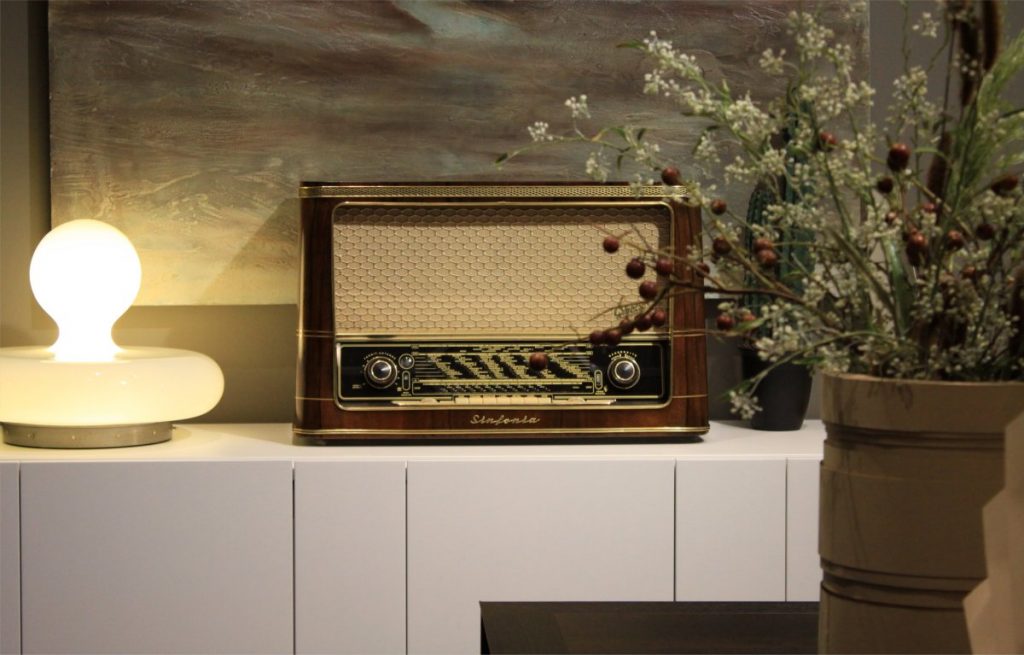
FM FREQUENCY RANGE
FM frequency range widened from 88 up to 108 MHzBLUETOOTH
Bluetooth receiver embedMULTI PLATFORM CONNECTION
Each radio is equipped with a cable for connection to any digital device.TUBESOUND IMPROVEMENT
- FM frequency range winded from 88 up to 108 MHz - The tube radios produced in Germany in the years 50/60 are famous worldwide for their excellent sound quality, the beauty of their furniture, their strength and for their construction standards without compromise. Unfortunately the FM band extending from 87.5 to 100 MHz for which are scarcely usable in most cases. After careful study and a lot of tests we were able to obtain a frequency range by this unit from 88 to 108 MHz . We have also reconstructed a display exactly identical to the original, made with the same materials and the same techniques, but with the new frequency span. The result is perfect. An original device, but with the ability to listen all stations in any country.
– Bluetooth receiver embed – The unit is equipped with a BLUETOOTH receiver powered directly by the receiver power supply. This makes it possible to control the amplifier from any external digital device as an IPAD, a Smartphone, or a sophisticated multimedia station. So you can hear your preferred web station or your lossesless file without cables on the room. Wireless Receiver can be equipped upon requests.
– Multi Platform Connection – A customized adaptation cable to connect any digital device as Iphone, Smartphone, Laptop, CD Player etc. will be provided with this radio. This special cable suits the different impedances between the modern equipment and the receiver. Furthermore the two stereo channels flow into one without increasing the load to the input unit.

HISTORY
The Ehrich & Graetz metalworks was a factory established in 1866 in Berlin by Albert Graetz (1831–1901) and the tradesman Emil Ehrich (died 1887) under the name “Lampen-Fabrik Ehrich & Graetz OHG” (E&G).
By 1897 the firm was controlled by Albert’s sons, Max Graetz, and Adolf Graetz. The company grew rapidly, and in 1899 a factory complex were built in Berlin, in the United States, France, the UK, and Bombay.
Around 1910-1916 Max Graetz developed the famous Petromax Lantern. Around 1925 the factory also produced radios, and other electrical appliances under the name Graetzor.
In the Second World War, just as in the First World War, the company was part of the war industry. With the use of forced laborers from France, Russia, and the Netherlands the company made huge gains in production.
At the end of April 1945 the factory was claimed by the Russian army.
In 1949 the firm became part of the “peoples” program, “VEB-VolksEigenerBetrieb” and since 1950 “VEB Fernmeldewerk, Berlin Treptow (RFFT).” VolksEigenerBetrieb, means that the factory was owned by the people for the people (Communism).
In 1948 Erich, and Fritz Graetz founded a new company in Altena, Germany known by the name The Graetz Firm, which was successor to the lost family company in Berlin. The new company produced mainly radios, and televisions.
In 1961 the company was then sold to Standard Elektrik Lorenz (SEL) AG, but since 1987 has been to the present owned by the Finnish company Nokia.
MAIN FEATURES
Year of production: 1955/56
Superheterodyne IF 468/10700
8 AM Circuits 12 FM Circuits
Wavebands: Medium Waves (OM), Long Waves (OL),Short waves (OC), FM (UKW)
1 Elliptical mid-woofer
1 Midrange
2 Electrostatic Tweeter
Dimensions (LHD): 26.1 x 16.4 x 12 inch
Net weight: 35 lb 3.9 oz
7 Tubes: ECC85 ECH81 2 x EF89 EM34 EABC80 EL84
Rotating ferrite antenna for AM bands

Not much to share with items Musica and Melodia, this unit has been designed to meet the needs of contemporary wealthy audiophiles.
The sound of this radio is still outstanding.
When the restoration of this item was finished, I had the chance to listen to the wonderful Concerto Grosso in G Minor "Christmas" as performed by the NBC Symphony Orchestra - Harmonia Mundi, Audiophile Edition. The music player is my Marantz CD94 MKII inserted into the Recording Magnetophon Input.
Listening to the Symphony with SINFONIA 4R is really thrilling, even more exciting than listening to it from my own stereos, although they are all customized to my very demanding standards.
Below, details, starting with the sound diffusion system.

LOUDSPEAKERS
As already said previously, 4R "Rundstrahl-Raumklang durch Klangkompressor" translates into Omnidirectional Surround Sound by a Compressor.
I would like to point out that the radio was first produced in 1954 but we are already talking about surround sound!
As known, low notes naturally spread in the surroundings in an omnidirectional way, so it is rather difficult to locate a subwoofer with closed eyes.
On the other hand, speakers spreading high notes are extremely directional, making their position in relation to the listener very critical: it only takes a little change in position from the settled listening location and part of the message and details of the highest sound information are missed.
During the evolution process of Hi-Fi, this issue has been tackled with different systems and solutions. At that time, Graetz set it with the 4R system very effectively.
The giant woofer is mounted on Sinfonia's front panel and this is consistent with what we have said about the fact that the low tones are omnidirectional and therefore not easy to be localized. Medium and high pitched tones are instead spread by a sound compressor produced by a double ceiling built into the cabinet and conveniently shaped internally.
The midrange speaker is fixed directly to this false ceiling, and the sound is diffused in all directions with the help of an acoustic trap.
The two electrostatic tweeters are also fixed to this ceiling, but with an additional channel of admission.
In the lower quality models Music and Melody, the system is quite different and simplified.
The performance is amazing: no matters what your position is in respect to the unit, the sound does not change, the highs are always perfectly in front of us and the bass always present.
It is not possible to determine if we are facing the unit or at its side, letting us free to move anywhere in the room.
Compared to the television, isn't radio fascinating for this reason as well? Free to move, free to think and do something else while listening.
TONE CONTROL
The tones control system is very efficient. Above the large tone control knobs there is a band that lights up gradually indicating the emphasis on the band on which it acts.
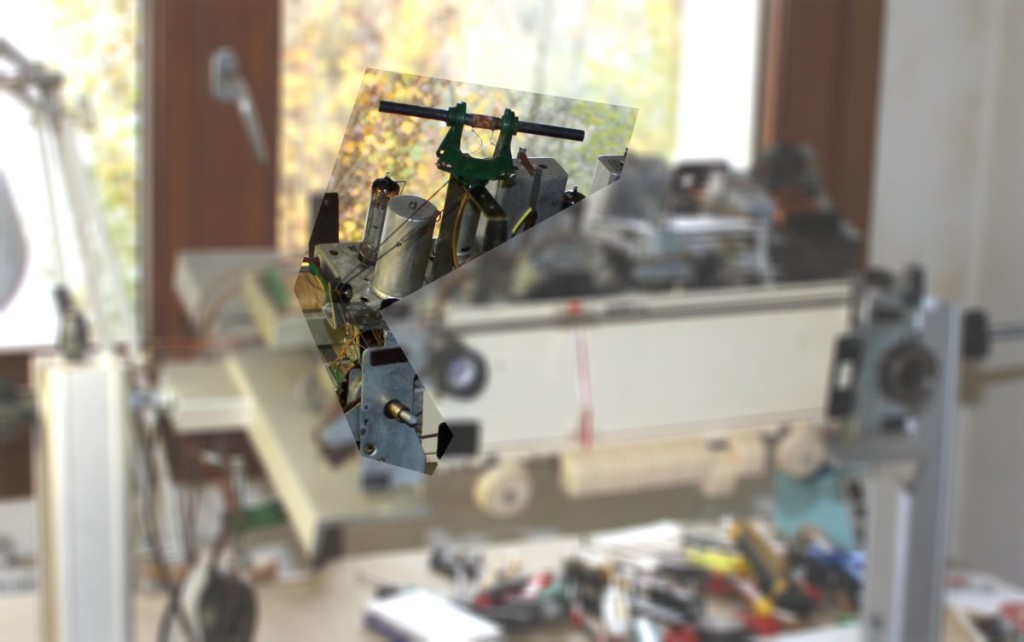
AERIALS
Inside the cabinet there is a dipole for FM reception and a ferrite rotating aerial for AM reception.
Ferrite aerial can be rotated from the outside to achieve a perfect tuning of the device in the AM.
In this picture see the rotation mechanism and the position indicator of the aerial.
The reception sensitivity with internal aerials is very good. This unit was in fact produced in a period when there were not many radio stations and those available fairly apart from each others.
Using an external aerial sensitivity is further increased.
SEPARATE CONTROL TUNING BETWEEN AM AND FM
The tuning system is another gem.
The unit is equipped with mechanisms for keeping separate the AM and FM bands.
The tuning knob is single but a selector switch commutes into cable systems (all in steel) and pulleys separated depending on the band.
The movement is transferred to both mechanisms with a system of pulleys and separated gears.


TUNING INDICATOR
The magic eye has of course been replaced.
The volume control is on the left (with built-in loudness) and axially, the command of the ferrite antenna rotation.
You can see the indicator of the position of the antenna, the magic eye that indicates the perfect tuning of each station, the scale for Long Medium and Short AM waves, and the FM scale.
Below, from left, there are, in order of appearance, the bass control knob, power buttons, record player, tape recorder, keys for tuning Long Medium and Short Waves, FM, and the knob for the treble control.
Finally, the movement of the tuning knob is very pleasant being supported by a large flywheel.
Axially to the dial knob there is a selector for the control of the selectivity in AM.

REAR SIDE
Output for external speakers.
Socket for recorder (tonbandgerat).
Turntable input (Tonabnehmer)
AM and FM aerial inputs and ground socket.
RESTORATION STEPS
THE USUAL AMAZING LAST IMAGE






